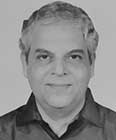
Ayurveda Physician
Prof. Hitesh Anantray Vyas MD (Ayu) PhD (Ayu) started his academic education at JS Ayurveda College, Nadiad, before he acquired his postgraduate degrees at IPGT & RA Hospital and Gujarat Ayurved University in Jamnagar. During his career he worked in various leading positions, most recently as Deputy Hospital Superintendent and Head of Department of Swasthavritta of IGPT & RA. Meanwhile, he looks back on 23 years of teaching experience and has a vast experience in guiding research works of his students. 80 research papers on his scientific work have been published so far in peer reviewed national and international journals.
Auto Immune Disorders are among the rapidly growing health problem. According to a cohort study on 22 million people in UK, 19 auto immune disorders affected 10.2% population during 2000 to 2019.[1] Autoimmune diseases have been defined as diseases in which cells of the adaptive immune system become over reactive and produce self-reactive T-cell and antibody responses.[2]
No classification of diseases in Āyurveda, considers immune system (which is named vyādhikṣamatva in the Caraka Saṃhitā [3]) itself directly as a cause of the diseases. It is self-evident that these diseases are nija roga (the diseases arising from vitiation of doṣas due to their own factors.[4] Āyurveda considers three main causative factors for the occurrence of diseases; asātmyendriyārtha Saṃyoga (faulty application of senses), prajñaparādha (volitional transgression) and pariṇāma (environmental factors).[5] Bījadoṣa (genetic factors) is considered an additional factor.[6] According to this concept, if any part of the Bīja (reproductive cell) of any of the parents is vitiated, then the body component derived from that part of the bīja will not be healthy in the offspring. Some studies show that the underlying cause of many auto immune diseases is genetic.[7] It is believed that these diseases occur when a person with a genetic defect is exposed to some other triggering factor. This triggering factor may be faulty lifestyle or environmental factors. In such cases bījadoṣa (genetic mutation) is an utpādaka nidāna (predisposing factors)[8] and asātmyendriyārtha saṃyoga, prajñaparādha and pariṇāma are vyañjaka nidāna (triggering factors)[8] for auto immune diseases.
Though, kapha is main responsible doṣa for bala[9] (which is a prerequisite for immunity according to Āyurveda) but other two also play some role in it.[10] Thus, it can be said that the normal state of the doṣas provides basis for immunity to the body. Abnormal doṣas act against body components. Vitiated doṣas produce diseases by polluting the dūṣyas of the body. In case of Auto Immune Diseases, susceptible body components or organs because of bījadoṣa get affected by the doṣas. The nature of disease depends on the doṣa, dūṣyas, srotas etc.
Āma is also an important factor for the vitiation of doṣas and dūṣyas. Āma is an immature and intermediate product produced during digestion, metabolism and dhātupariṇāma.[11] When Āma gets combined with the doṣas, they are known as ‘sāmadoṣa’. Vāgbhaṭa considers ‘balabhraṃśa’ as one of the clinical manifestations of Āma.[12] Balabhraṃśa is generally interpreted as a reduction in strength. However, the word ‘Bhraṃśa’ also denotes deviation from responsibility. Thus, balabhraṃśa can be understood as deviation of Bala (immune function) from its responsibility leading to auto immune diseases.
On this basis the treatment is to be planned keeping āma, doṣa and dūṣyas in view. It is necessary first to terminate āma. It is also important to note here that hot or pungent medicines cannot be used for such purpose every time. Items with tikta rasa (bitters) pācana (digestive) medicines such as Guḍucī, Mustā etc. are more useful in diseases where there is involvement of Pitta.
The first principle of treatment according to Āyurveda is elimination of causative factors, which is called ‘Hetuviparīta Cikitsā’. When bījadoṣa is the main cause in Auto Immune Diseases, it is not possible to completely remove it, but ‘Rasayana Cikitsā’ can strengthen the body tissues. Due to such strong and healthy tissues, the doṣa could not get ‘Kha-vaiguṇya’, which ultimately results in the reduction of the disease. Thus, rasayana cikitsā plays a very important part in the treatment protocol of any auto immune diseases. Ancient Āyurvedic texts describe some rasayana drugs with affinity for specific dhātu (tissue), the use of which provides rapid benefits in such diseases.
When the causes of diseases have psychological involvement, addition of regular counseling and medhya medicines to the main treatment can give incredible results.
The main treatment after that has to be done according to the doṣa, dūṣya and condition of the disease. The organ in which the disease has occurred must also be kept in mind and the herbs effective on that organ should also be used.
In Jamanagar we have used these principles to treat auto immune diseases like Ulcerative Colitis, Psoriasis, and Auto Immune Hemolytic Anemia etc. of which some cases will be shared during the lecture.
References:

Rosenberg Ayurveda and Wellness-Consulting AG
European Academy for Ayurveda Switzerland
Büelstrasse 17
CH-6052 Hergiswil NW
info@ayurveda-symposium.org
Newsletter
* I have the Privacy policy taken note of. I agree that my details and data for answering my enquiry are collected and stored electronically.

2024 © Rosenberg Ayurveda Academy gGmbH